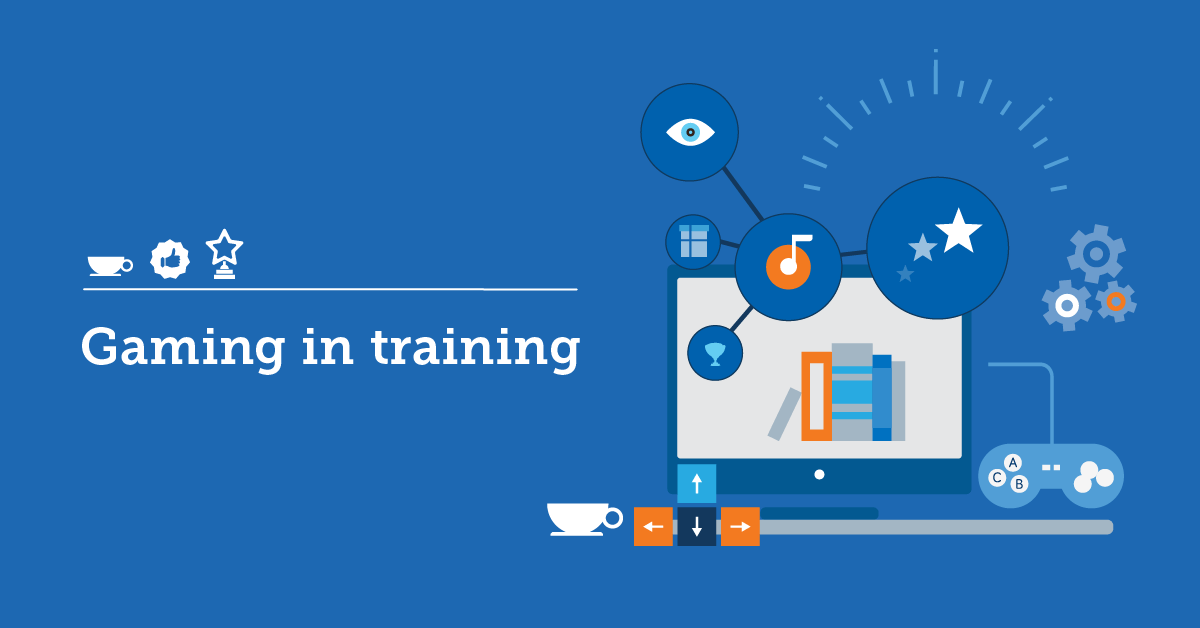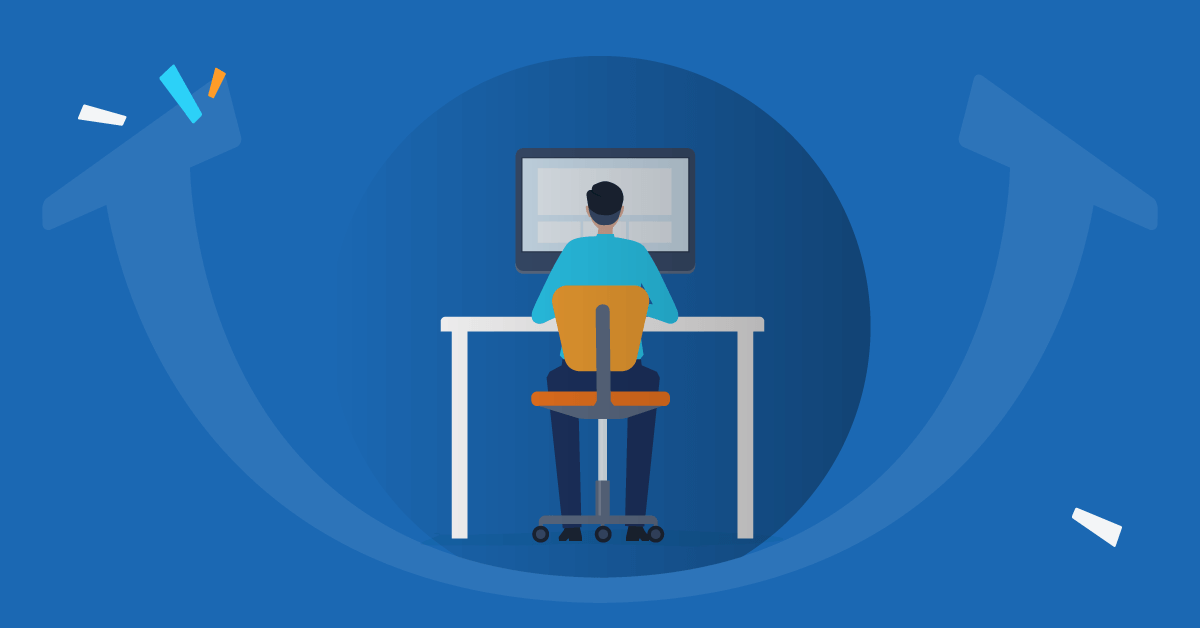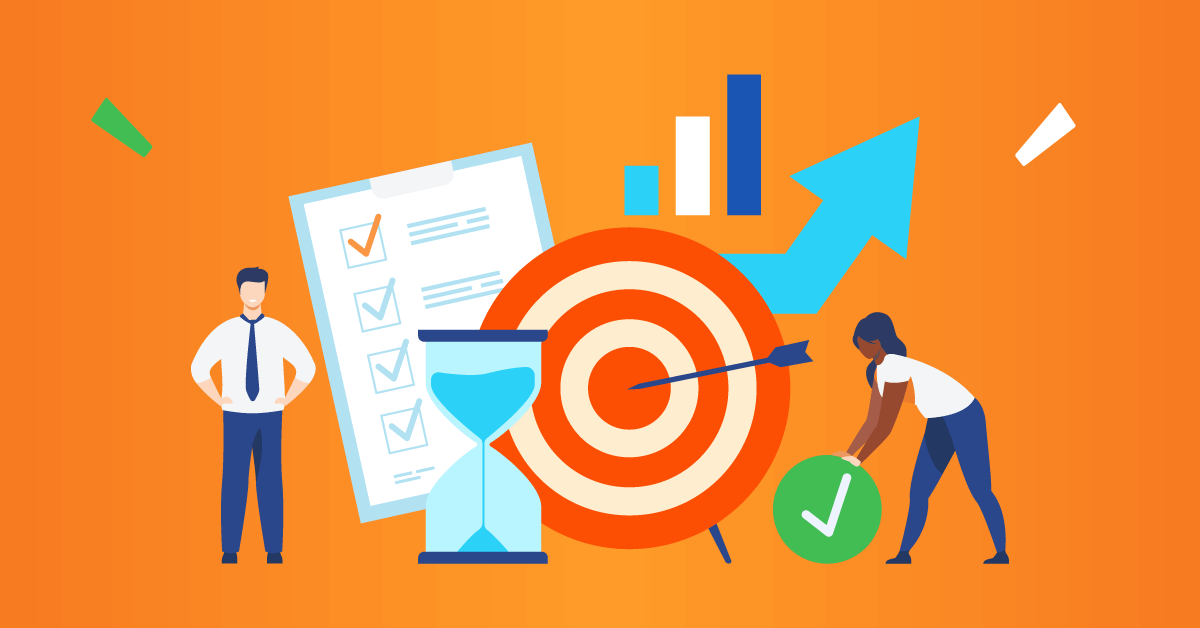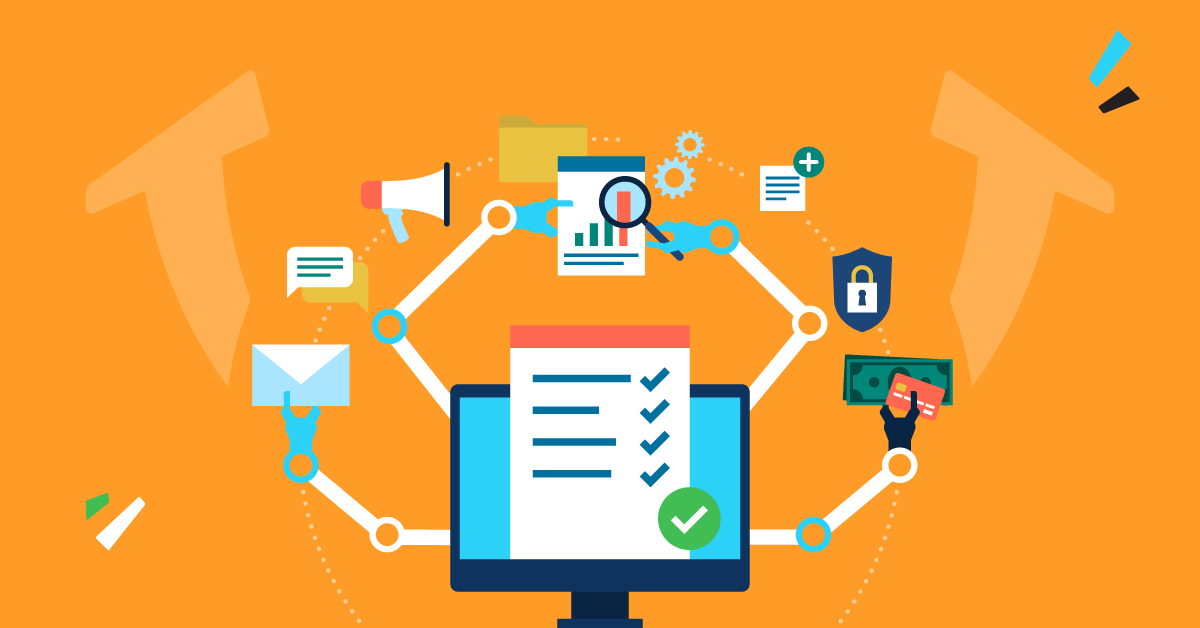You may have heard the phrase “work hard, play harder”, but is this what gamification is about? Not exactly. Gamification in the workplace may be inspired by games, but its purpose is to engage and motivate employees during non-game activities. Or, even make some mandatory tasks a bit more fun.
Think about it: wouldn’t your teams be more willing to complete an absolutely necessary course on workplace safety if they knew they’d collect points and get rewards as they’re doing so? Or, wouldn’t an employee feel happy to learn they ranked among the top of their company on a cybersecurity test?
We’re used to seeing concepts like scores, leaderboards, and badges, in games, but they could have a place at work, too. Before we see how they can be applied at work, though, let’s have a more detailed gamification definition.
What is gamification in business?
Gamification in the workplace is the use of game techniques in a non-game context. Companies create internal competitions to engage employees in a healthy “race” and incorporate scores, levels, and prizes, as extra motivation. Based on a recent TalentLMS survey on gamification, 83% of those who receive gamified training feel motivated, while 61% of those who receive non-gamified training feel bored and unproductive.
Here are a few examples of how companies gamify work:
- Employees who get the highest score on a company-wide assessment around workplace safety will earn company-branded swag of their choice. This way, the company aims to encourage employees to pay more attention and try to get as many correct answers as they can, as opposed to simply completing the test quickly just to get it over with.
- The company has built a library of online courses on a wide range of topics and employees who complete a course will get a certificate. This way, the company motivates employees who decide to build up their skill sets.
- Instead of training employees through presentations or manuals, the company created online mini-courses that include fun characters, quizzes, and a scoring system. By adding interactive elements, the company aims to increase participation and boost employee engagement so that learning sticks.
Besides engaging employees, companies may also use gamification to reward loyal customers or attract potential job candidates. Let’s see a few real-life examples of companies that have used gamification at work for multiple purposes.
Examples of gamification in the workplace
The concept of gamification in the workplace is not exactly new. Years ago, Google used a series of riddles in order to attract curious and skilled job candidates, while SAP created an app where sales reps engaged in role-playing activities and earned badges based on their progress.
For training purposes, gamification isn’t just a way to make learning fun or to have employees compete with each other. It’s also a way to motivate employees and give them a sense of achievement. You can do this by rewarding employees as they complete a course. The rewards can be either symbolic, like badges and titles, or actual prizes, like company swag or gift cards.
A few years ago, Cisco launched a Social Media Training Program that used a similar reward system. Employees would get certified (e.g. a specialist or a master certificate) as they took courses on social media skills and completed relevant tasks.
Are you ready to build your own gamification program?
Reap all the benefits of gamification from day one with TalentLMS.
The training platform that users consistently rank #1.
How to use gamification at work
We’ve already seen how gamification in the workplace can increase motivation and engagement. But, how do you unlock these benefits? Here are our gamification tips to get you started.
1. Clearly communicate the goals and processes of the game
Let’s say, for example, that you want to use gamification to drive your sales team to close a specific number of contracts in three months. Before starting this initiative, you need to clearly communicate the following factors to the team:
● Goals of the game
● Criteria to know when they’ve won
● Rewards for winning, placing second, and so on
● Benefits for the business and the individual of achieving the goals
● Rules, especially anything that disqualifies an employee
When you apply gamification at work, the rules of the game should be crystal clear to all participating employees from the start. After all, no one wants to compete in an unfair race!
Don’t forget that a sense of purpose is just as important as a sense of achievement. Make sure that you communicate the ultimate purpose of the game as clearly as the criteria and rewards for winning.
2. Include gamification in training
Gamification in the workplace will feel natural when it’s already baked into employee training. Unlock all the benefits of gamification in learning, and establish a culture of friendly competition by incorporating gamification features in your eLearning courses.
The most popular gamification features include:
- Points: Learners earn points for completing tasks, achieving a certain result, or logging on to the learning platform.
- Leaderboards: Learners can compete to earn the most points and rank highest out of their peers. Leaderboards can be an exciting and dynamic addition to the learning experience.
- Badges: Reward completion, good results, and exemplary behavior with virtual badges that learners can accumulate on their profile.
- Rewards: Beyond badges and points, real-life rewards like vouchers and discounts can further incentivize participation.
3. Offer desirable rewards
Not everyone is after the same incentives. The rewards on offer for high achievement in gamification in the workplace need to be relevant and desirable to employees.
For example, if you’re running a “star employee” program that awards exceptional achievement, will a badge be enough to motivate employees long-term? The chances are that the appeal of badges will wear off after a while. The promise of a chance for a bigger prize, like a five-star weekend away, might be more effective for motivating employees.
But monetary prizes aren’t the only reward to consider. Every employee who emotionally engages with their work craves recognition. Consider how small, quality-of-life rewards, like a voucher for a lunch out or an extra day off, can be used in combination with public recognition, e.g. presented in front of the whole company, to keep employees engaged.
4. Recognize everyone’s contribution
The catch of gamification in the workplace is that sometimes only the highest achievers feel recognized.
So, when you’re using gamification to improve participation in training and workplace activities, you’ll want everyone to feel like it’s worth participating. This makes it important to celebrate participation as much as achievement.
Think about the kinds of rewards you can offer for completing a training course, a workplace challenge, or achieving KPI benchmarks. Often, public recognition can go a long way toward rewarding participation.
5. Track the success of gamification in the workplace
As with any new initiative, you’ve got to measure your successes and failures in order to improve. Gamification can offer many benefits, but it’s not a silver bullet. And sometimes gamification can even have benefits beyond what you initially predicted.
Design a simple analytics dashboard to track how your gamification program performs against the goals you had set. Track factors like the number of employees who participate in the program, how many complete the goals, and how much overall job performance improved during or right after the gamification program.
If you’re finding low participation statistics, you might need to consider how you reward and recognize participants. If overall job performance doesn’t improve as much as expected, you might need to adjust your gamification initiative to better match your business goals and employee KPIs.
Either way, the best way to improve your gamification strategy is to track and analyze the right data.
6. Reflect on performance
Just as it’s important to track the successes and failures of applying gamification in the workplace, it’s also vital that employees have an opportunity to reflect on where they succeeded and failed in the challenge.
Let’s say that an employee failed to close enough contracts as part of the sales team’s three-month challenge. How do you show that employee what they could have done differently to achieve the goal?
Close every game or challenge with a “recap” during which both the top successes and failures of the program are highlighted. Make sure to focus part of this session on what individual employees did well so that others can learn from them, too.
Let the games begin!
Now that you have a good idea of what gamification in the workplace looks like, it’s time to put it into action. And while for participants it might be a fun process, you have to handle all the back-office work. In other words, you need to find a way to assign points and calculate scores, figure out who’s entitled to get a prize, and add all those interactive elements that make tasks look like a game.
You can make all this admin work easier with the right tools in place. A Learning Management System that supports gamification will set you free from manual tasks and will help you automatically apply and track gamification. TalentLMS has all the gamification training features you need to engage your learners. Get a sneak peek of how you can use TalentLMS to gamify training and… start the game!
Are you ready?
| Tags: Gamification




